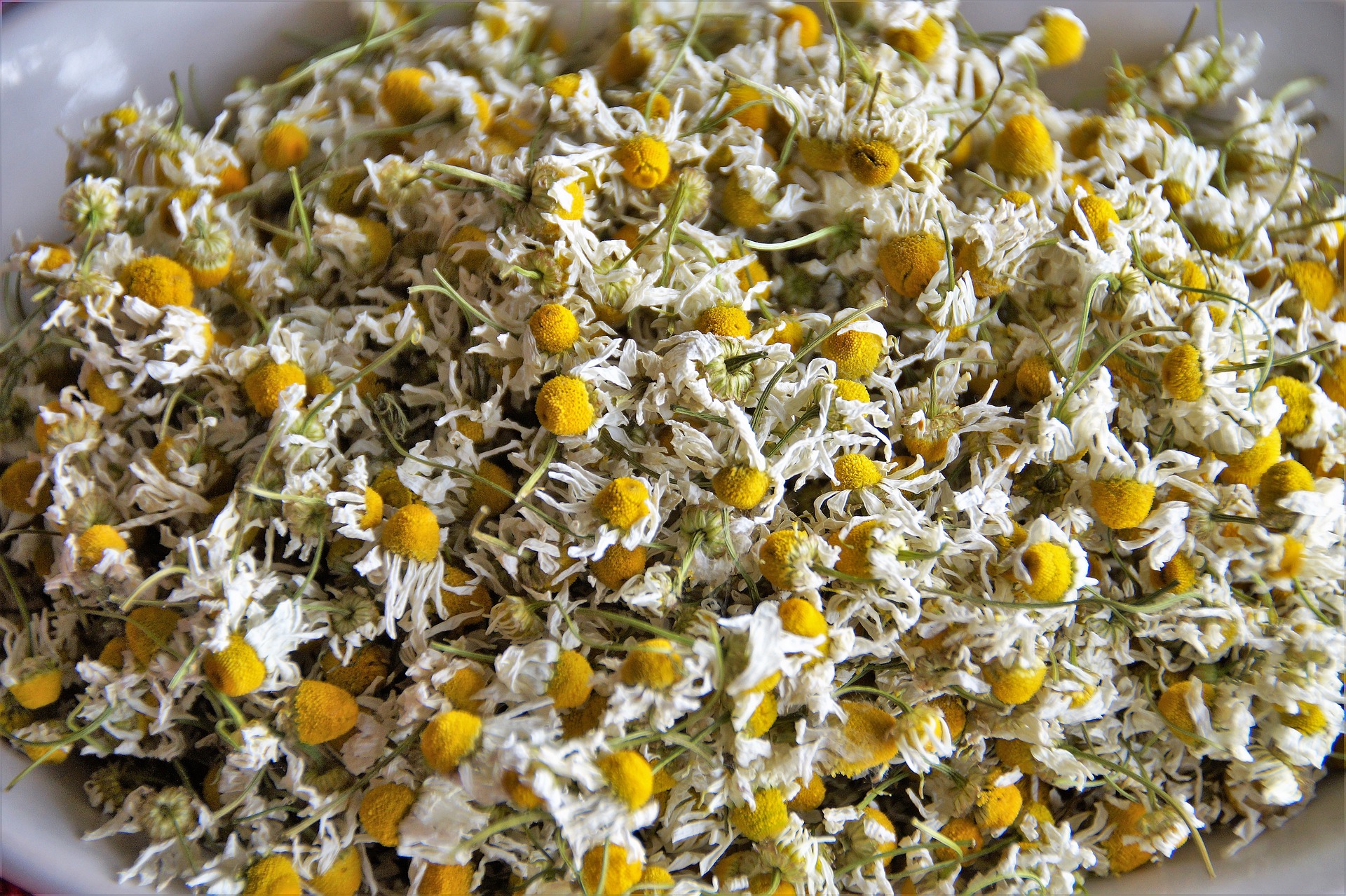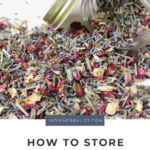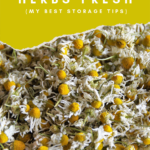Links contained in this post and elsewhere on my website may include affiliate links. When you make a purchase through these links, I earn a commission at no additional cost to you. I only link to products and services that I love - and that I think you will love, too!
Have lots of dried herbs on hand for your home apothecary? Here’s a quick guide about how to store herbs and maximize their shelf life.
Keeping dried herbs on hand for culinary and wellness projects is essential for home herbalists. Knowing I have a selection of my favorite plants on hand helps me feel confident I can meet my own needs and those of my loved ones at a moment’s notice.
There are two common questions that I hear often when people begin to purchase dried herbs to use at home. Besides where to find good herbs to buy (which we also cover below), one question has to do with how much of an herb to buy, and the other is whether powdered herbs are ok.
Knowing how much to buy (and store) impacts quality. Because herbs are high quality for only a few months after drying, it doesn’t make sense to buy a lot at once. Making and storing herbal extracts is a much better idea if you want a long shelf life. When it comes to quantity, I usually purchase 4 oz at a time, unless I’m planning to make a large batch of extract. Purchasing smaller amounts more frequently gives you fresher, more vibrant material.
Powdered herbs are great if you plan to use them quickly. If you want to store supplies in your plant pantry for a while, stay away from powder and buy cut and sifted instead. This will increase the longevity of the material. A powder loses freshness quickly because more of the herb is exposed to air, light, and moisture thanks to the small particle size. I like buying herbal powders if I’m making extracts or if I need materials like barks, berries, and roots for a specific project.
How to store herbs starts at the source
Maximizing the shelf life of your dried herbs actually starts when you purchase them. Older herbs will go stale faster. There are three main options for sourcing herbs: purchasing from a store, ordering online, or growing your own. Ordering online is the best option for most people. If you are very lucky, you might even have an herb farm nearby where you can source your herbs, but sadly that’s not the case for most of us.
Tips for buying herbs in shops
Although the idea of a store that you can visit when you need new supplies is fantastic, in my experience it’s usually not a good choice. This is because of two reasons: clear jars and low turnover. Many health food stores with dried herbs use clear jars to display their wares. Because herbs are a specialty item, herbs might sit on the shelf for months before being purchased by customers.
These herbs are likely stale. This isn’t intentional, but most retailers aren’t herbalists and don’t know that light degrades herbs very quickly. If all of the herbs look the same color and have little to no fragrance, it’s best to say a polite “No, thanks” and buy your herbs someplace else. Instead, look for stores that keep their herbs protected from light and who place frequent small orders.
If you plan to shop locally, you might also enjoy my article How to Tell the Quality of Dried Herbs.
Purchasing herbs online
I order most of my herbs online through specialty companies. This is a good way to get fresher material that has been stored properly – but only if you are buying from a dedicated herb company! Be careful about ordering from random sellers on Amazon, in other words.
Like brick and mortar retailers, they may unintentionally store herbs improperly, or even mislabel or misidentify their plants. (And yes, I’ve had this happen!) So always order from someone or a company that you know you can trust.
The main drawback to online ordering is that you will need to plan ahead and learn to be flexible – herbs are harvested seasonally, so sometimes things will be out of stock for months on end. This is another reason that I prefer keeping extracts in my herbal supplies. I can make a lot at once and then confidently store them for 3-5 years on a rotation.
I buy most of my dried herbs from Mountain Rose Herbs (#affiliate). They are a specialty company that works with organic farmers and have a trusted network of suppliers. Read my article about the Best Places to Buy Dried Herbs Online to learn about my other favorite sources.
Growing your own herbs
Some herbs yield enough in small gardens to make them worth growing at home. Calendula, nettle, lemon balm, plantain, yarrow, valerian, mint, and tulsi are some of my favorites here. Most people will need to focus on herbs that grow vigorously in small spaces, but if you have more room you can also consider larger herbs like elecampane or including shrubs and small trees like hawthorn, witch hazel, and even eleuthero.
The hardest part about growing your own herbs is finding a good place to dry them. In areas with hot, humid summers, indoors on screens near a dehumidifier will be the best option. In various places I’ve lived I’ve turned a closet into my dedicated drying space and also used a corner of the living room in a pinch. Remember to protect your herbs from light while they dry.
How to store herbs at home
When storing dried herbs to use later, it’s important to remember that it’s all about chemistry. Herbs are full of compounds like volatile oils and plant pigments that won’t last forever, so fresher is better. There are a few conditions that promote chemical reactions which degrade the quality of stored, dried herbs. These are light, heat, moisture, and air.
Amber glass canning jars are a great option if you need to store your herbs on an open shelf, but they are heavy. I usually use food-safe plastic containers with screwtop lids. Depending on where I was living at the time, I’ve stored my herb containers in a dedicated closet, a free-standing hutch, and inside vintage travel trunks. All of these options provided a nice dark (and dry) environment. Here are all the important things to remember.
Avoid light
I know they are pretty lined up on a shelf in your kitchen where you can admire them, but within a month or two they will lose all of those beautiful colors and start to go stale. Try to keep them in a cabinet, pantry, or behind a curtain on a shelf instead.
Keep them at a comfortable temp
Store your herbs someplace that stays at a comfortable temperature. Especially for delicate leaves and flowers, heat will cause your herbs to lose color and fragrance.
Protect dried herbs from moisture
Humidity counts as moisture! An airtight container is best to keep dampness and mold at bay, but make sure the surrounding environment isn’t overly damp, either (such as a bathroom or basement). Check for dampness and moldy smells in herbs that have been stored for a while.
Use an airtight container
Dust, airborne pollutants or household sprays/air fresheners/ cooking odors. . . ick. Put a lid on it and store those herbs in closed containers! Not to mention that your herb will lose its smell over time – a big clue that useful properties are being lost.
The basics of how to store herbs
With a little planning, you can store herbs in a way that maximizes their freshness. You will be able to enjoy the most benefit from herbs stored to be their best, and you’ll be able to protect your investment. Buying dried herbs in bulk is often the most economical way to purchase them, but it can still be quite expensive!
However, remembering to keep them out of the light and away from heat and humidity in sealed containers will set you up for success.
This post was originally published January 9, 2017. Updated on March 7, 2022.
Photo credit: Pixabay



